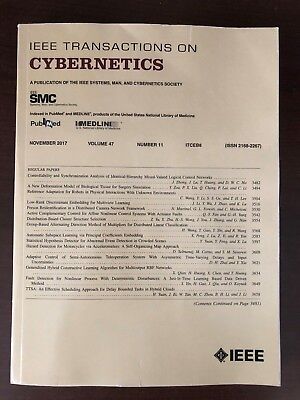Sliding Flexible Prescribed Performance Boundary-Guided Reinforcement Learning Control for Input-Constrained Nonlinear Systems.
IF 10.5
1区 计算机科学
Q1 AUTOMATION & CONTROL SYSTEMS
引用次数: 0
Abstract
This article first proposes a sliding flexible prescribed performance boundary-guided reinforcement learning (SFPPB-RL) control approach for input-constrained nonlinear systems (ICNSs). By designing a sliding flexible PPB, which not only can adaptively adjust the initial boundary according to the initial error, but also dynamically adjust the constraint relaxation according to the coupling correlation between the input constraint and the performance constraint, a novel prescribed performance control (PPC) approach is proposed. Compared with the existing "horn" shape performance boundary-based PPC methods, the limitation of having to repeatedly debug design parameters or sacrifice initial transient performance to meet different initial error requirements is eliminated. Meanwhile, the coupling effect between the input constraint and the performance constraint is also considered, and the balance between input safety and control performance is achieved by constructing an auxiliary system. Furthermore, combining identifier-critic-actor structure-based RL strategy and backstepping technique, a sliding flexible PPB-guided reinforcement learning (SFPPB-RL) optimal control algorithm is developed, which minimizes the cost function while ensuring input safety and prescribed performance indicators. The validity of the proposed algorithm is demonstrated via simulations.输入约束非线性系统的滑动柔性规定性能边界引导强化学习控制。
本文首先针对输入约束非线性系统(ICNSs)提出了一种滑动柔性规定性能边界引导强化学习(SFPPB-RL)控制方法。通过设计一种既能根据初始误差自适应调整初始边界,又能根据输入约束和性能约束之间的耦合关系动态调整约束松弛的滑动柔性PPB,提出了一种新的规定性能控制方法。与现有的基于“喇叭”形状性能边界的PPC方法相比,消除了必须反复调试设计参数或牺牲初始瞬态性能以满足不同初始误差要求的局限性。同时,考虑了输入约束与性能约束之间的耦合效应,通过构建辅助系统实现输入安全性与控制性能之间的平衡。在此基础上,将基于辨识器-关键行为者结构的强化学习策略与反演技术相结合,提出了一种滑动柔性ppb引导强化学习(SFPPB-RL)最优控制算法,在保证输入安全和规定性能指标的前提下,实现了代价函数的最小化。通过仿真验证了该算法的有效性。
本文章由计算机程序翻译,如有差异,请以英文原文为准。
求助全文
约1分钟内获得全文
求助全文
来源期刊

IEEE Transactions on Cybernetics
COMPUTER SCIENCE, ARTIFICIAL INTELLIGENCE-COMPUTER SCIENCE, CYBERNETICS
CiteScore
25.40
自引率
11.00%
发文量
1869
期刊介绍:
The scope of the IEEE Transactions on Cybernetics includes computational approaches to the field of cybernetics. Specifically, the transactions welcomes papers on communication and control across machines or machine, human, and organizations. The scope includes such areas as computational intelligence, computer vision, neural networks, genetic algorithms, machine learning, fuzzy systems, cognitive systems, decision making, and robotics, to the extent that they contribute to the theme of cybernetics or demonstrate an application of cybernetics principles.
 求助内容:
求助内容: 应助结果提醒方式:
应助结果提醒方式:


